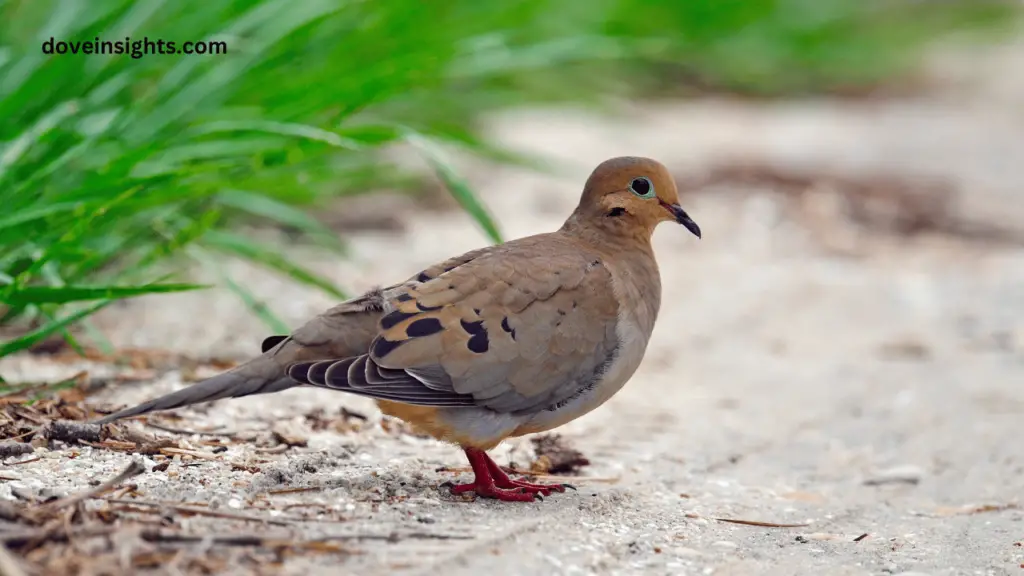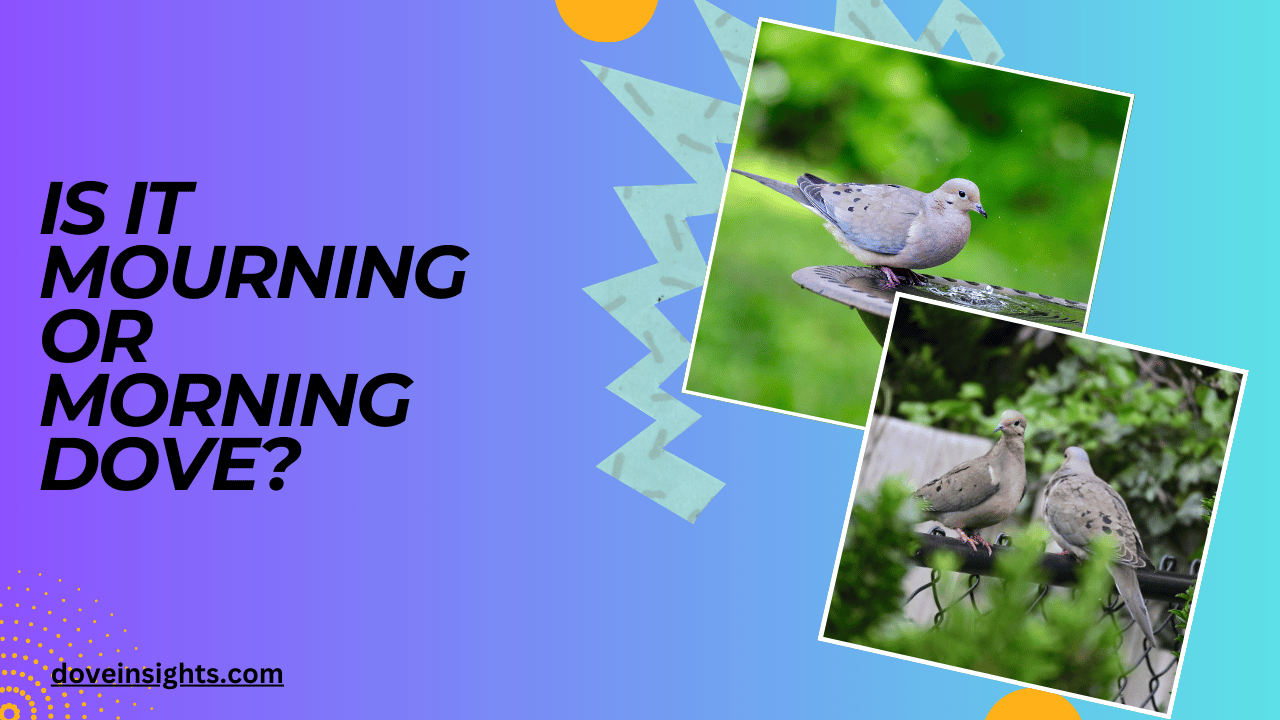Birdwatchers and nature enthusiasts are often captivated by the sounds and sightings of doves. Among the various species of doves, the mourning dove and the morning dove are often confused due to their similar names and appearances.
However, these two birds are actually quite different in both behavior and characteristics. The confusion between the “mourning” and “morning” dove has led to many debates, but understanding the distinction is essential for bird lovers, especially those new to the hobby of birdwatching.
Are you wondering if the bird you hear cooing at dawn is a mourning dove or a morning dove?
In this article, we will delve deep into the characteristics, habits, and distinguishing features of both doves to help you identify the one that visits your garden or perch.
By the end, you’ll have a clearer understanding of why these birds have such unique names and what makes each of them fascinating.
Contents
Mourning Dove: A Symbol of Tragedy and Grace
The mourning dove is a commonly spotted bird across North America.
Known for its soft, mournful cooing, this bird has earned its name due to the sound it makes, which is often likened to a grieving lament.
The mourning dove is one of the most widespread and recognizable species of doves, often seen perched on telephone wires or flying gracefully across open fields.
Mourning doves are slender, with long tails and soft gray-brown feathers. They are medium-sized birds, measuring around 12 to 13 inches in length, and they are typically found in a variety of habitats, including forests, grasslands, and urban areas.
Their distinctive, soft calls have been associated with feelings of sorrow or loss, which is likely why they’re referred to as “mourning” doves.
However, this bird’s name isn’t just symbolic of sadness; it’s also an emblem of peace and hope. In many cultures, the mourning dove is regarded as a symbol of renewal and tranquility, despite the somber sound it makes.
This is why they’re often spotted in gardens or nature reserves, where people find solace in their presence.
Morning Dove: A Misunderstood Name
Interestingly, there is no bird species officially named the “morning dove.” The term is often mistakenly used in place of the mourning dove because of the similarity in sound.
Some people may think they are hearing a “morning dove” because the bird’s cooing is most audible in the early morning hours, especially at sunrise.
The confusion may stem from the belief that the name should reflect the time of day the bird is most active, but in reality, the mourning dove’s name is not related to the morning time but rather to the mournful sound it makes.
Therefore, the “morning dove” is actually just a colloquial misunderstanding of the mourning dove’s name, but not a separate species.
The cooing sound of a mourning dove can be particularly soothing at dawn, which might explain why some individuals wrongly associate the dove’s name with the morning.
This is also likely fueled by a desire to give the bird a more positive or cheerful association, as morning time often evokes feelings of hope and new beginnings.
How to Identify a Mourning Dove
If you’re trying to identify a mourning dove, there are several key characteristics to look out for. First, these birds have a slender build and a small, rounded head.
Their long tails are one of the most noticeable features, often spread in a fanned shape when they take flight. The feathers of a mourning dove are typically a soft grayish-brown with a slight pinkish hue on their undersides.
Mourning doves also have a distinctive, gentle cooing sound that often starts with a two-part “coo-COO-COO” sound, which has been described as mournful or plaintive.
Their behavior is generally quite calm, as they prefer to perch for long periods of time, occasionally taking off in a fast flight if startled. Mourning doves are also commonly seen foraging on the ground for seeds, which is their primary food source.
When spotting a mourning dove, pay attention to their tail shape, color, and the cooing sound they make. These will help you distinguish them from other birds that may share similar habitats, such as pigeons or other types of doves.
The Habitat and Habits of the Mourning Dove
Mourning doves are adaptable and can thrive in a wide variety of habitats.
They are commonly found in forests, farmlands, and suburban areas, especially in the United States. They are known to migrate from the northern parts of North America to warmer climates in the southern regions during the winter months.
In terms of behavior, mourning doves are generally solitary birds, though they do sometimes gather in flocks, especially during migration. They are known for their gentle nature and calm demeanor, often sitting on telephone wires or fence posts during the day.
Their diet primarily consists of seeds, but they will also consume fruits, grains, and some types of vegetation.
Another notable habit of mourning doves is their distinctive flight pattern. When startled, mourning doves take off in a rapid, straight flight, followed by a short, jerky glide. This flight style is quite different from other doves, which may have a more leisurely flight style.
Why the Confusion? Understanding the Difference

The confusion between “mourning” and “morning” doves likely stems from a combination of the bird’s early morning cooing sounds and its association with calm, peaceful imagery.
Many people may hear the cooing of a mourning dove at dawn, and without knowing its official name, they might refer to it as a “morning dove,” thinking the name reflects the time of day.
Additionally, the names of birds can often be misleading or evolve over time due to cultural associations. While mourning doves are most commonly seen during the early morning, their name is linked to their vocalizations rather than the time of day. This simple misunderstanding has led to the widespread use of the term “morning dove,” even though it isn’t an official species.
By understanding the origin of these names and the birds’ characteristics, we can eliminate the confusion and appreciate the mourning dove for what it truly is—a bird that symbolizes peace and tranquility, regardless of whether it’s morning or not.
Conclusion
In conclusion, the confusion between the mourning dove and the “morning dove” is more about a linguistic mix-up than a biological distinction.
While the mourning dove is widely recognized for its mournful cooing sound, which is often heard at dawn, its name reflects the emotional tone of the sound, not the time of day.
The mourning dove is a beloved symbol of peace and hope, often spotted in a variety of habitats across North America.
Understanding the differences between these two terms can deepen our appreciation for the mourning dove and help us communicate more accurately when discussing these peaceful creatures.
Whether you’re a seasoned birdwatcher or a casual observer, recognizing the mourning dove for its true characteristics is a step toward connecting with nature on a deeper level.
FAQ’s
What is the main difference between a mourning dove and a morning dove?
The term “morning dove” is a misnomer. There is no bird species by that name. The correct name is mourning dove, named for the mournful sound it makes.
Why is the mourning dove called that?
The mourning dove is named for its sad-sounding coo, which is often likened to a grieving lament.
Is there a bird called the morning dove?
No, “morning dove” is not an official bird species. It’s often mistakenly used in place of the mourning dove.
Where can I find mourning doves?
Mourning doves are found across North America, in forests, grasslands, and urban areas. They are adaptable and often seen in gardens and suburban spaces.
What do mourning doves eat?
Mourning doves primarily feed on seeds, grains, and sometimes fruits. They often forage on the ground.
What sound do mourning doves make?
Mourning doves produce a soft, mournful cooing sound, often described as a two-part “coo-COO-COO.”








